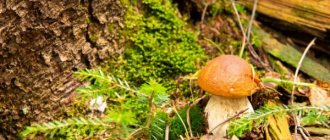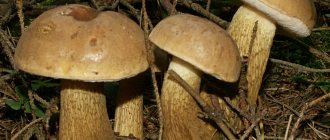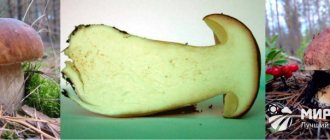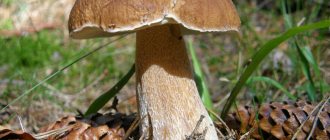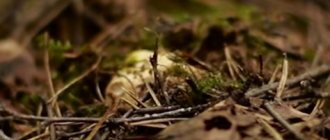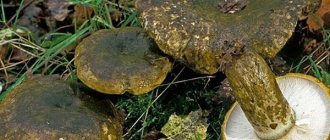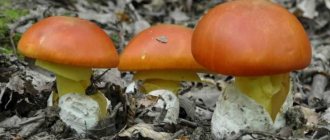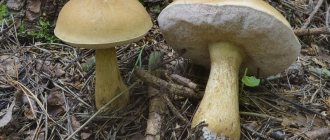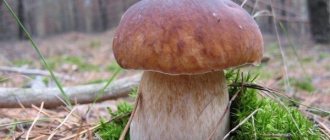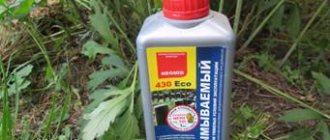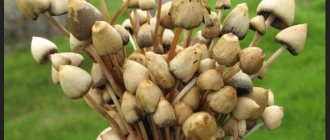Mushrooms
0
4840
Article rating
Kira Stoletova
False mushrooms are easy to find, but there are mushrooms similar to them. Among them there are edible and toxic. Eating some false milk mushrooms is fatal. White milk mushroom has a number of useful substances and, when properly prepared, has a pleasant aroma and taste.
Types of false milk mushrooms
Features of milk mushrooms
A false breast from a real one is determined based on external qualities:
- round cap with a compressed center up to 20 cm, always moist, slimy;
- the shape of the cap is funnel-shaped;
- color white, yellowish;
- brown spots are present;
- the plates are white or yellowish. The quality and age of the mushroom are determined by the plates;
- the flesh is white, elastic and fleshy;
- pungency in taste and smell;
- there is a lot of milky juice, it is absent only in the dry mushroom.
The false breast differs from the real one in appearance
Primary processing and preparation
Bitters can be salted, pickled, and sometimes even fried, although the latter cooking method is used extremely rarely.
However, in order to cook them properly and get rid of the characteristic bitterness present due to the milky juice, the mushrooms require soaking. Usually only young bitters are marinated. You can salt them either hot or cold, but it’s definitely best to do it with spices. Properly prepared bitters, salted or pickled, can become a real decoration for the holiday table.
https://youtube.com/watch?v=aA1L63bx_dk
Bittersweet is a gift of nature, which is suitable not only for food, but also used in medicine. Its tissues contain a substance that negatively affects some pathogenic bacteria, including Staphylococcus aureus. So bitters can not only be used as food, but will also be beneficial for health.
Differences from other mushrooms
According to the description, there are many false varieties of real milk mushrooms. Many of them are eaten, but some are poisonous.
Difference from a creaker
It is difficult even for an experienced specialist to distinguish a white milk mushroom from a squeaky one.
Skripun is edible, similar to white milk mushroom, but the taste is different. It also has beneficial properties. Main differences:
- it is called creaking because of the special creaking sound when parts of the fruiting bodies come into contact;
- these false doubles appear later than the real ones;
- worms settle only in white milk mushrooms; they do not grow in the flesh of the squeaky mushroom;
- the plates are less fleshy, lighter and thinner in white.
Difference from dry milk mushrooms
False black milk mushroom is popularly called “nigella”, “dry” or “chameleon”.
It has a different cap color depending on the age of the mushroom. Initially it is white, but over time it turns brown. There is no milky juice. Features of dry milk mushroom:
- needs a well-lit place;
- lives in mixed and birch forests;
- the cap is dry;
- the hole at the top is deeper.
Difference from bitterling, or pepper milk mushroom
The white milk mushroom differs from the false milk mushroom in its place of growth. Gorchak is found in the North in forests. Grows in well-moistened places in large groups.
Irina Selyutina (Biologist):
The pepper milk mushroom is characterized by a creamy white dry cap in the shape of a funnel, as well as an abundant secretion of white milky juice, which turns bluish or olive-green in air and a specific, very hot peppery taste that disappears only after thorough soaking.
The cap is up to 8 cm in diameter. The surface is flat, convex in young organisms, and funnel-shaped in mature ones. The plates are pale, yellow and red, with a coating. The stem is up to 8 cm. The milky juice is bitter. The taste is pungent and bitter, which is why this mushroom is only salted. It is classified as conditionally edible.
Difference from thin pig
The thin pig is a poisonous species, poisoning with it leads to death. Symptoms appear several hours after eating this mushroom.
The difference between a real mushroom and a pig in a hat, which has its own characteristics:
- size – up to 20 cm;
- the edges are directed inward;
- covered with fine hairs;
- color olive, brown, yellow.
Irina Selyutina (Biologist):
Upon careful examination of the underside of the cap of the thin pigtail, or rather the hymenophore, you will notice that it is folded and not lamellar, although it is often described in various sources as lamellar. It is formed not by real, but by pseudoplates. It is easy to separate from the surface of the cap, which is not possible with real plates. The color of the pseudoplates is usually lighter than the color of the cap. When subjected to mechanical action - pressure - they darken.
The flesh of the pig is brown; it darkens at the cut site. The leg is up to 9 cm, directed to the side. Tapers towards the soil. Collection takes place from mid-summer to mid-autumn.
The false milk mushroom is larger and has a brown stem. It accumulates a large amount of heavy metals.
There are false varieties of real milk mushrooms
Difference from spruce row
The difference from the spruce row is in the pulp. It is more elastic, white, smells like flour, tastes fresh. The plates of the false mushroom are white, then (as the mushroom grows) they become yellow or blue.
The leg of the row reaches a height of 10 cm and a width of 2 cm. It is smooth and white. The row is edible and is used to prepare many dishes.
Grows in coniferous forests from late summer until the first cold weather. The groups are small. Rarely collected. The size of the cap reaches 10 cm. The surface is sticky and gray in color. The center is darker than the edges.
Difference from whitefishes
Whitefish grow in the Center, North, West, and also in the Urals. Harvesting begins from the first days of August until mid-autumn. One of the differences is the appearance of the cap. The white cap has a diameter of up to 6 cm, velvety, white with red spots.
The main difference is in the pulp; in a real mushroom it is always white, while in a mushroom it is pink. The size of the white cap is smaller and has drooping bare edges. It is used only for salting; it must be carefully prepared beforehand.
Difference from the pale grebe
The toadstool has a slight thickening near the base of the leg. The appearance is more like russula.
The toadstool's cap can be olive green or white. Directly below the cap there is a ring on the stem.
Difference from milky
The milkweed looks like a white milk mushroom. This is a poisonous species and its consumption leads to death. The cap is up to 12 cm in size. It is fleshy, convex and funnel-shaped.
The edges are initially folded and droop with age. Old milkweed is red or pink. The leg reaches 8 cm in length and 4 cm in width. It is found from mid-summer to early autumn.
What other types of moss mushrooms are there?
The red flywheel is a fairly rare edible trumpet mushroom that grows singly or in groups from mid-July to early October. Peak yields occur in August-September. Places of distribution: roadsides, as well as deciduous and mixed forests.
The mushroom cap is convex, but during the process of growth it becomes prostrate, cushion-shaped, about 8 cm in diameter. Its surface is smooth, dry, matte, velvety to the touch, red in color of varying intensity. The tubular layer is medium-porous, adherent, first yellow and then greenish in color.
The leg is round, thinner at the base, solid inside, about 8 cm high with a diameter of no more than 1 cm. The surface of the leg is smooth, dry, yellow at the cap, reddish-brown at the base. The pulp is thick, fleshy, soft in the cap, hard in the stem, with a pronounced mushroom smell and taste. When exposed to air, the light pink color of the pulp quickly changes to blue.
Mushroom picking
Each type of mushroom has characteristics regarding its place of growth, soil, light and humidity. The mushroom grows:
- in the forest of middle age. In the young they do not yet have time to appear, but in the old they are overgrown;
- the grass near the trees should be low, in high places the harvest is less common;
- collected after rain, in the morning when there is dew;
- In places where it grows, a characteristic mushroom smell is felt.
Deadlines for collecting milk mushrooms:
- black is harvested in mid-summer and early autumn;
- the blue one gathers throughout August;
- oak and aspen are harvested from the end of July until the beginning of autumn;
- yellow and pepper are harvested from July until the end of summer.
All terms are conditional. The climate and soil must be moist when harvesting.
How to pickle bitters at home?
Pickling bitters at home is not at all difficult, but you need to know the specifics of their preparation. To eliminate bitterness, mushrooms need to be soaked in water for 5 days, changing the water every day. You need to store bitters while they are salting in a cool place - a basement or cellar.
- salt – 2 tbsp. spoons;
- bitters - 1 kg;
- garlic, spices - to taste.
- The soaked bitters are washed and squeezed.
- Place in a container, season with salt, spices and garlic.
- Cover the mushrooms with water, place a weight on top and leave for a month.
Marinade for bitters
Pickling bitters for the winter varies. Sometimes a saline solution is used exclusively. And sometimes mushrooms are marinated with vinegar. Then they turn out marinated and will have an interesting, slightly sour taste. After cooking, the mushrooms are doused with cold water so that they have a denser structure.
- bitter mushrooms – 1 kg;
- water – 2 glasses;
- vinegar – 60 ml;
- salt – 1 tbsp. spoon;
- sugar – 1 teaspoon;
- black pepper – 10 peas;
- clove buds – 5 pcs.;
- bay leaves – 2 pcs.;
- onions – 2 pcs.;
- carrots – 1 pc.
- Boil bitters for 20 minutes and squeeze.
- Pour water into a pan, add sugar, salt, vegetables, spices and boil until the vegetables are ready.
- Pour in vinegar, add mushrooms and boil for 10 minutes.
- Place the mushrooms in jars, fill them with marinade and cover with lids.
How to pickle bitters quickly?
Pickled bitters, a quick preparation method for which will be discussed below, turn out very appetizing with a light aroma of the spices used. It is not necessary to use the entire set of spices indicated in the recipe. If you don’t like any of them, you can do without it.
- bitters – 2 kg;
- onion – 1 kg;
- vinegar essence – 3 teaspoons;
- black peppercorns – 9 pcs.;
- cloves – 3 pcs.;
- bay leaf – 2 pcs.;
- sugar, salt - 2 tbsp. spoons;
- water – 1 liter.
- The washed mushrooms are placed in a saucepan, filled with water, boiled for 10 minutes, and drained in a colander.
- The onion is chopped.
- A marinade is made from water, salt, sugar, cloves, pepper and vinegar.
- Place mushrooms in it and boil for 5 minutes.
- Mushrooms are placed in jars, layered with onions.
- Pour boiling marinade and add 10 ml of oil and seal.
How to pickle bitters with soaking?
How to salt the collected bitters so that the taste of the finished product is pleasant worries every housewife who is doing this for the first time. First of all, you need to soak the mushrooms thoroughly, changing the water several times. The process may take up to 5 days, but the resulting mushrooms will taste great.
- bitters - 1 kg;
- garlic – 4 cloves;
- salt – 1 tbsp. spoon;
- black and allspice pepper, dill, currant leaf.
- Mushrooms are filled with water, changing it 1-2 times a day.
- Soaking bitters lasts 4-5 days.
- The bitter mushrooms are boiled for 20 minutes, the water is drained, and the mushrooms are cooled.
- Place the mushrooms with garlic, salt and spices in a container, apply pressure and leave for 3-4 days.
- The mushrooms are placed in jars, oil is poured in and refrigerated.
How to pickle bitters using a hot method?
If you are interested in how to pickle bitters using a hot method, this recipe is for you. It is believed that this method of preparation makes the mushrooms especially tasty. First, the container with bitters is kept warm for about 10 days, and after that, for further pickling, they are placed in a cold place.
- bitters - 1 kg;
- water – 1 liter;
- salt – 2 tbsp. spoons;
- dill, currant leaves, garlic.
- Hot pickling of bitter mushrooms begins by placing the mushrooms in a saucepan, adding water and boiling for 10 minutes.
- After that, they are thrown into a colander and doused with cold water.
- Brine is boiled from water and salt, bitters are placed in it and boiled for 15 minutes.
- Dill, currant leaves, and garlic are placed at the bottom of the container.
- The cooled brine is poured in, a plate is placed on the mushrooms and a weight is placed.
- In a couple of weeks the bitters will be ready.
Risk of bitter bitter poisoning
The bitterness of the gall fungus is toxic enough to harm human health. It enters the bloodstream and causes intoxication, disrupting the functioning of the liver and gallbladder. A toxic substance can remain in the body for up to a month, at first without giving anything away, lulling vigilance.
Symptoms of poisoning:
- abdominal pain, spasmodic, sharp and acute;
- bitter taste in the mouth, dryness;
- weakness, drowsiness, dizziness;
- nausea and vomiting;
- pale skin, severe bruises under the eyes;
- temperature increase.
Important!
If at least one of the items on this list appears, you need to immediately call a doctor, and while waiting for him, do not waste time and perform gastric lavage by drinking large amounts of warm water with the addition of potassium permanganate, inducing vomiting. Self-medication in the form of taking any medications or traditional methods is dangerous.
But nature itself protects people as best it can from eating gall fungus, and it’s not for nothing that it’s bitter. Eating a dish, even if there is a piece of mustard in it, is at least tasteless. It’s not for nothing that even insects and slugs don’t eat it. You can eat a dangerous dose if the dish was prepared by marinating or adding vinegar, which masks the bitterness. The insidiousness of the poison is also that it may not appear immediately, but after several weeks or even months.
Composition and calorie content of bitters
The mushroom is considered conditionally edible and is not consumed raw.
The calorie content of bitters is 22 kcal per 100 g, of which:
- Proteins - 2.18-3.09 g, depending on growth conditions;
- Fats - 0.34 g;
- Carbohydrates - 3.26 g;
- Fiber or dietary fiber - 1 g;
- Water - 92.45 g.
The bitters contain 1.98 g of sugar, of which 1.48 g of dextrose and 0.17 g of fructose.
The pulp of the mushroom contains vitamins and minerals, albeit in small quantities.
Vitamins per 100 g of product:
- Vitamin C - 2.1 mg;
- Thiamine - 0.081 mg;
- Riboflavin - 0.402 mg;
- Nicotinic acid - 3.607 mg;
- Pantothenic acid - 1.497 mg;
- Vitamin B6 - 0.104 mg;
- Folates - 17 mcg;
- Choline - 17.3 mg;
- Betaine - 9.4 mg;
- Vitamin B12 - 0.04 mcg;
- Vitamin E (alpha tocopherol) - 0.01 mg;
- Tocopherol, beta - 0.01 mg;
- Tocopherol, gamma - 0.01 mg;
- Tocopherol, delta - 0.01 mg;
- Tocotrienol, alpha - 0.05 mg;
- Vitamin D (D2 + D3) - 0.2 mcg;
- Vitamin D2 (ergocalciferol) - 0.2 mcg;
- Vitamin D7 - IU;
- Vitamin K1 (dihydrophylloquinone) - 1 mcg.
The amount of vitamin D varies: mushrooms that grew on sunny edges have more of it.
Mineral composition of the pulp:
- Calcium, Ca - 3 mg;
- Iron, Fe - 0.5 mg;
- Magnesium, Mg - 9 mg;
- Phosphorus, P - 86 mg;
- Potassium, K - 318 mg;
- Sodium, Na - 5 mg;
- Zinc, Zn - 0.52 mg;
- Copper, Cu - 0.318 mg;
- Manganese, Mn - 0.047 mg;
- Selenium, Se - 9.3 μg.
The composition also contains amino acids and lipids.
The mushroom pulp contains a lot of:
- Vitamin C, which is necessary for the body: stabilizes the functioning of the hormonal system, supports hematopoiesis, neutralizes the development of allergic reactions.
Riboflavin, which improves the quality of hair and skin, prevents headaches and increases local immunity of the organ of vision and oral mucosa.
Folic acid, which normalizes digestion processes, participates in metabolic processes and stimulates the production of red blood cells. Another beneficial effect of folic acid is the production of serotonin, the pleasure hormone. With its deficiency, depression develops.
Application
The chemical composition of the species is different, so each of them has found its own niche for use. Some are used more for preparing gourmet dishes, while some are used in medicine, pharmaceuticals or cosmetic purposes.
Medicinal use
Some species are used to create medicinal drugs that help stabilize blood pressure and reduce the level of sugar and “bad” cholesterol in the blood.
- carbohydrates;
- proteins;
- fiber;
- vitamins (especially C and PP);
- microelements (phosphorus, potassium, sodium, magnesium, calcium).
You can also talk about the following medicinal properties of bittersweet:
- normalization of heart rate and blood pressure;
- stimulation of metabolism and hematopoiesis;
- reducing the risk of occurrence and development of cancer and infectious diseases;
- antioxidant, anti-inflammatory effect;
- immunostimulation.
The mushroom is used both in medicine and in cooking
Use in cooking
The fruiting bodies of bitterling are tender and fragile. To preserve them better, they are laid out in one layer in the shade and in a cool place.
This condition is very important, because under direct sunlight they will oxidize and disappear. Start cooking no later than 4 hours after collection.
Preliminary primary treatment is required to remove toxins and the unpleasant aftertaste of milky juice. Mushrooms are washed several times, it is better to do this in running water. After this, soak for 3-8 hours.
Gladysh is excellent for pickling: this treatment makes it possible to quickly go through the fermentation process. Before salting, they are soaked for 3 to 5 days with regular daily changes of water. Then they are doused with boiling water and filled with brine. Both hot and cold salting methods are used.
The meatiness of this species is appreciated by gourmets. It is sometimes used for frying, after which the dish turns out to be piquant, with a peculiar pungent taste, although cooking occurs without the addition of hot spices.
But even after the most careful and correct processing, bitters are used almost only in salted and pickled form. You can serve bitter milk mushrooms as a separate dish or in salads and cold appetizers of vegetables, poultry and meat.
Gorkushka helps out every year.
Salting bitter mushrooms at home - a simple recipe
Bitter mushrooms. Marinate and preserve

